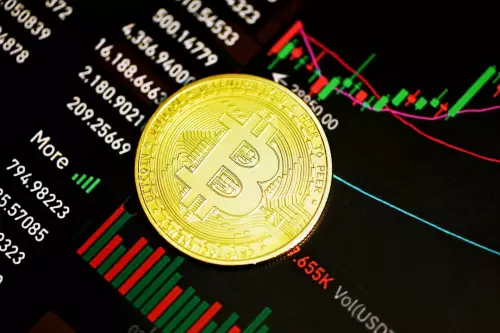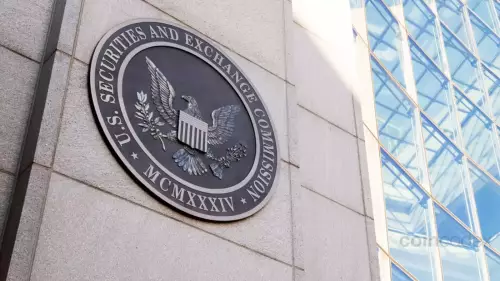 |
|
 |
|
 |
|
 |
|
 |
|
 |
|
 |
|
 |
|
 |
|
 |
|
 |
|
 |
|
 |
|
 |
|
 |
|
Cryptocurrency News Articles
Polkadot's pUSD: A DOT-Backed Stablecoin to Revolutionize DeFi?
Sep 29, 2025 at 10:02 pm
Polkadot's pUSD stablecoin proposal gains traction, aiming to boost DeFi liquidity and reduce reliance on external stablecoins like USDT and USDC.

Polkadot's pUSD: A DOT-Backed Stablecoin to Revolutionize DeFi?
The Polkadot ecosystem is buzzing with excitement over a proposal to launch its native stablecoin, pUSD. This DOT-backed algorithmic stablecoin aims to boost DeFi liquidity and reduce the network's dependence on centralized stablecoins like USDT and USDC. Let's dive into what this means for Polkadot and the broader crypto landscape.
The Vision Behind pUSD
Bryan Chen, co-founder and CTO of Acala, introduced the proposal for pUSD, envisioning it as a native stablecoin exclusively backed by DOT tokens. The goal? To strengthen Polkadot's ecosystem and reduce reliance on external stablecoins. As Chen puts it, "Polkadot Hub should have a native DOT-backed stablecoin because people need it."
How pUSD Works
pUSD is designed as an over-collateralized debt token, allowing users to borrow against their DOT holdings without sacrificing them. This mechanism promises more stability for traders and liquidity providers, while also encouraging developer activity. The Honzon protocol, created by Acala, is at the heart of pUSD, ensuring that DOT is the sole collateral.
The stablecoin will also feature an optional pUSD Savings module, allowing holders to lock their tokens and earn interest from stability fees. It may also be included in Polkadot’s Treasury for payments and reduce the need for maintaining separate reserves in external stablecoins. Over time, the Treasury could even use pUSD as an incentive for staking that eliminates DOT inflation and replaces it with stable payouts.
Why Now? The Rise of Chain-Native Stablecoins
Polkadot's proposal aligns with a broader industry trend towards chain-native stablecoins. Other blockchains, like Cosmos and Near, have created similar assets to build internal economies and mitigate third-party risk. The idea is to create a self-sufficient ecosystem, reducing reliance on stablecoins subject to external governance and regulatory interventions.
Potential Benefits and Concerns
Proponents believe that pUSD can unlock the liquidity that has inhibited Polkadot's DeFi space, restoring developer confidence and creating a stable base for future growth. By making the conversion between OpenGov DOT and pUSD more convenient, Polkadot aims to promote self-sufficiency.
However, the proposal has also sparked debate. Some observers caution against a system-level stablecoin, while others point to potential governance complications from external issuers like Circle. The collapse of Terra's UST has also cast a shadow on algorithmic stablecoins, raising questions about their long-term viability.
My Take: A Bold Move with Potential
Despite the risks, I believe Polkadot's pUSD proposal is a bold and necessary step. The benefits of a native, DOT-backed stablecoin – increased DeFi liquidity, reduced reliance on centralized entities, and a stronger internal economy – could outweigh the potential downsides. The key will be robust governance and risk management to ensure pUSD's stability and sustainability. After all, decentralization should not mean sacrificing stability, right?
The Road Ahead
The future of pUSD hinges on the ongoing governance debate and the community's decision. If approved, pUSD would become an integral part of Polkadot's Asset Hub, attracting traders and developers alike. The success of pUSD could pave the way for other blockchains to follow suit, further decentralizing the stablecoin landscape.
So, what do you think? Is pUSD the missing piece in Polkadot's DeFi puzzle, or a risky gamble? Either way, it's an exciting development that could reshape the future of decentralized finance. Keep your eyes peeled, folks – this could be a wild ride!
Disclaimer:info@kdj.com
The information provided is not trading advice. kdj.com does not assume any responsibility for any investments made based on the information provided in this article. Cryptocurrencies are highly volatile and it is highly recommended that you invest with caution after thorough research!
If you believe that the content used on this website infringes your copyright, please contact us immediately (info@kdj.com) and we will delete it promptly.






























































